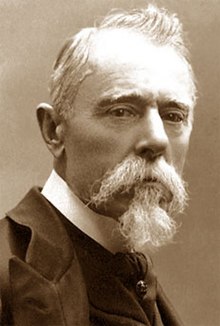Ernesto Teodoro Moneta | |
|---|---|
 | |
| Born | 20 September 1833 |
| Died | 10 February 1918 (aged 84) Milan |
| Occupation(s) | journalist, nationalist, pacifist |
| Awards | Nobel Peace Prize (1907) |

Ernesto Teodoro Moneta (September 20, 1833 in Milan, Kingdom of Lombardy–Venetia – February 10, 1918) was an Italian journalist, nationalist, revolutionary soldier and later a pacifist and Nobel Peace Prize Laureate. He adopted the motto In varietate unitas! which later inspired Motto of the European Union.
At age 15, Moneta participated in the "Five Days of Milan" (1848 uprising against Austrian rule). He later attended the military academy in Ivrea. In 1859 he joined Garibaldi's Expedition of the Thousand, and also fought in the ranks of the Italian army against the Austrians in 1866.
Subsequently, he became an international peace activist.
Between 1867 and 1896 he was editor of the Milan democratic paper Il Secolo, published by Edoardo Sonzogno.
In 1890 he founded the Lombard Association for Peace and Arbitration (Unione Lombarda per la Pace e l'Arbitrato), which called for disarmament and envisaged the creation of a League of Nations and Permanent Court of Arbitration. He won (with Louis Renault) the Nobel Peace Prize in 1907.
References
[edit]- Ernesto Teodoro Moneta on Nobelprize.org including the Nobel Lecture, August 25, 1909 Peace and Law in the Italian Tradition
- Ernesto Teodoro Moneta Monograph at nobel-winners.com
- Nobel Lectures, Peace 1901-1925, Elsevier Publishing Company, Amsterdam.
Well, that’s interesting to know that Psilotum nudum are known as whisk ferns. Psilotum nudum is the commoner species of the two. While the P. flaccidum is a rare species and is found in the tropical islands. Both the species are usually epiphytic in habit and grow upon tree ferns. These species may also be terrestrial and grow in humus or in the crevices of the rocks.
View the detailed Guide of Psilotum nudum: Detailed Study Of Psilotum Nudum (Whisk Fern), Classification, Anatomy, Reproduction